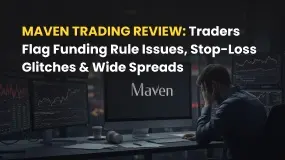简体中文
繁體中文
English
Pусский
日本語
ภาษาไทย
Tiếng Việt
Bahasa Indonesia
Español
हिन्दी
Filippiiniläinen
Français
Deutsch
Português
Türkçe
한국어
العربية
The Use of Indicators in Forex Trading: A guide to all South African traders
Abstract:The quest to make accurate predictions on the possible price movement for a given forex pair within a certain timeframe has engineered the creation of many forex indicators designed today. These indicators are structured to mimic price actions in signaling the possible market direction within a set period. Many indicators have been known to be near accurate in predicting market directions while some are known to lag. We have therefore exposed in this work the major advantages and disadvantages of using an Indicator while analyzing the market.

By: Chime Amara
What is a forex indicator?
Forex indicators are technical tools used to predict market trends based on the volume of trades carried out in a particular direction. Most forex Indicators are designed to mimic previous price movement patterns in forecasting the new trend to follow at a given period. This helps traders to make better decisions on when to buy or sell a particular pair in the forex market.
Types of Forex Indicators
There are four main divisions of forex indicators. This grouping is based on the specific functions they perform. They include below:
A. Volume Indicators
B. Support and Resistance Indicators
C. Trend Indicators and
D. Oscillator Indicators

Volume Indicators: This type of Indicator measures the downward or upward pressure coming into the market. Often high market volatility is used to signal a change of trend. Examples of Volume Indicators are Bollinger Bands, ATR Indicators, etc.
Support and Resistance Indicators: This is an important indicator used by traders in setting their entry and exit positions. Areas of strong support are used to mark the entry for a buy order while such points where prices meet strong opposition; are used to set sell orders. Examples of support and Resistance Indicators are Pivots points, Donchian channels, etc.
Trend Indicator: This type of Indicator is used in determining the prevalent market direction over a given period. Often, trend Indicators help the trader in understanding the market direction over the long term: say weekly or monthly. This is a special guide for swing traders. Examples: Moving Average, Ichimoku cloud, Average Direction Index (ADX), etc.
Oscillator Indicators: This type of Indicator is used to detect the market momentum. Often, the Oscillator Indicator mimics price actions. Hence they fall when market prices fall and rise when prices go up. Examples: Relative strength Index, Stochastic, Commodity Channel Indicator (CCI), Moving Average Convergence Divergence (MACD), etc.
Advantages of using an Indicator
· Aids the trader in making decisions.
· Helps in detecting the market trend.
· Assists the trader in choosing stop loss and take profit target.
Disadvantages of using an Indicator
A. Lagging: A major disadvantage of using forex indicators is the fact that they often lag. Lagging here means; they often waited for the market to execute some of its actions before they pick up or reflect the same.
B. Not good for interpreting fundamentals: Most forex indicators depend largely on previous price actions and do not take count of present fundamental factors moving the market.
C. Complexity in its use: Often it is very difficult for beginners to understand the function of a given indicator.

Disclaimer:
The views in this article only represent the author's personal views, and do not constitute investment advice on this platform. This platform does not guarantee the accuracy, completeness and timeliness of the information in the article, and will not be liable for any loss caused by the use of or reliance on the information in the article.
Read more

Maven Trading Review: Traders Flag Funding Rule Issues, Stop-Loss Glitches & Wide Spreads
Are you facing funding issues with Maven Trading, a UK-based prop trading firm? Do you find Mavin trading rules concerning stop-loss and other aspects strange and loss-making? Does the funding program access come with higher spreads? Does the trading data offered on the Maven Trading login differ from what’s available on the popular TradingView platform? These are some specific issues concerning traders at Maven Trading. Upset by these untoward financial incidents, some traders shared complaints while sharing the Maven Trading Review. We have shared some of their complaints in this article. Take a look.

BTSE Review: Ponzi Scam, KYC Verification Hassles & Account Blocks Hit Traders Hard
Have you lost your capital with BTSE’s Ponzi scam? Did the forex broker onboard you by promising no KYC verification on both deposits and withdrawals, only to be proven wrong in real time? Have you been facing account blocks by the Virgin Islands-based forex broker? These complaints have become usual with traders at BTSE Exchange. In this BTSE review article, we have shared some of these complaints for you to look at. Read on!

Inzo Broker Review 2025: Is It Legit or a High-Risk Gamble?
When you ask, "Is inzo broker legit?" you want a clear, straight answer before putting your money at risk. The truth about Inzo Broker is complicated. Finding out if it's legitimate means looking carefully at its rules, trading setup, and most importantly, the real experiences of traders who have used it. The broker shows a mixed picture - it has official paperwork from an offshore regulator, but it also has many user warnings about how it operates. This review gives you a fair and fact-based investigation. We will break down all the information we can find, from company records to serious user complaints, so you can make your own clear decision.

INZO Broker No Deposit Bonus: A 2025 Deep Dive into Its Offers and Risks
Traders looking for an "inzo broker no deposit bonus" should understand an important difference. While this term is popular, our research shows that the broker's current promotions focus on a $30 welcome bonus and a 30% deposit bonus, rather than a true no-deposit offer. A no-deposit bonus usually gives trading funds without requiring any capital from the client first. In contrast, welcome and deposit bonuses often have rules tied to funding an account or meeting specific trading amounts before profits can be taken out. This article gives a complete, balanced look at INZO's bonus structure, how it operates, and the major risks shown by real trader experiences. Read on!
WikiFX Broker
Latest News
Forex Expert Recruitment Event – Sharing Insights, Building Rewards
Admirals Cancels UAE License as Part of Global Restructuring
Moomoo Singapore Opens Investor Boutiques to Strengthen Community
OmegaPro Review: Traders Flood Comment Sections with Withdrawal Denials & Scam Complaints
An Unbiased Review of INZO Broker for Indian Traders: What You Must Know
BotBro’s “30% Return” Scheme Raises New Red Flags Amid Ongoing Fraud Allegations
The 5%ers Review: Is it a Scam or Legit? Find Out from These Trader Comments
WikiEXPO Dubai 2025 Concludes Successfully — Shaping a Transparent, Innovative Future
2 Malaysians Arrested in $1 Million Gold Scam Impersonating Singapore Officials
Is FXPesa Regulated? Real User Reviews & Regulation Check
Currency Calculator



